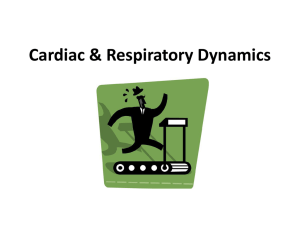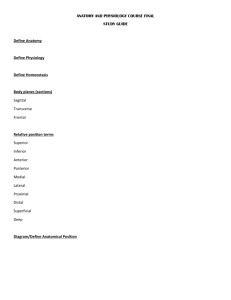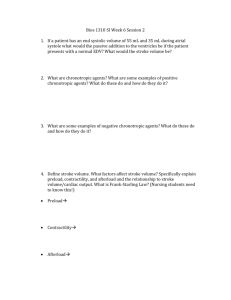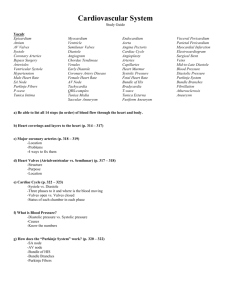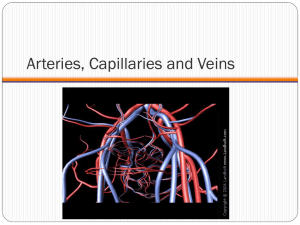Non-Infectious Diseases
advertisement
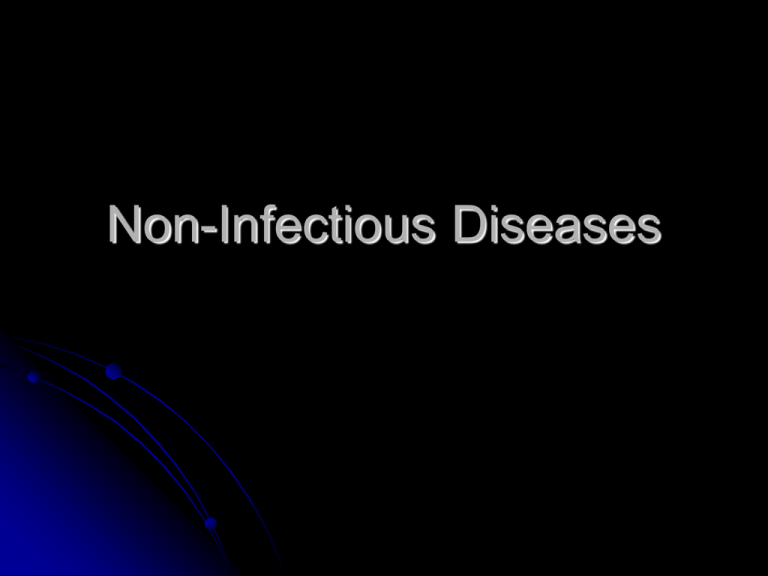
Non-Infectious Diseases Non-Infectious Disease Not caused by pathogens Cannot be transmitted to other people Risk factors: Genetics Life-style Environmental factors Genetic Risk Factors Determined by genes Congenital disease is present at birth Others don’t show up until later in life Familial Disease Tendency Disease runs in family Genetic Risk Factors Recessive gene disorders Need recessive gene from both parents Can be a carrier Cystic fibrosis & sickle cell anemia Down syndrome Born with extra chromosome Genetic Risk Factors Sex-linked disorders Linked to x chromosome (female) Can be recessive in females Color blindness, hemophilia, & muscular dystrophy Environmental Risk Factors Pollution Smoke Sunlight Radiation Altitude Water Lifestyle Risk Factors Diet Obesity Exercise Alcohol Tobacco Stress Sleep Leading Cause of Death in US 1. 2. 3. Heart disease: 631,636 Cancer: 559,888 Stroke : 137,119 (CDC, 2006) Cardiovascular Disease Disease of Cardiovascular system CV system is… Heart Blood Vessels Arteries Vein Capillaries Blood Types of CV Disease Hypertension Arteriosclerosis Atherosclerosis Heart Attack Stroke Arrhythmias Heart Valve Disorder Varicose Veins Hypertension High Blood Pressure Normal=120/80 Over 120/80= At risk High=150/90 Thickening of blood vessel walls Narrows passageways for blood Arteriosclerosis Hardening of the arteries Narrows blood vessels & blocks blood flow Atherosclerosis Fat deposits in blood vessels Heart Attack Caused by lack of oxygen delivery to cells Coronary heart disease Blockage of coronary arteries Caused by fat deposits and/or blood clots Causes heart attack Cardiac Arrest Entire heart stops Stroke Disrupts blood flow to brain No oxygen to brain Brain cells die Caused by fatty deposits, blood clots, or burst arteries Aneurysm Weak spot in blood vessel that can burst Stroke Effects Speech Senses Movement Memory Behavior Depending on side of the brain Heart Valve Disease 4 valves in heart 2 between atria & ventricle 2 between heart & arteries Bypass Surgery Arrhythmias & Varicose Veins Arrhythmias Abnormal heart beat Pacemaker Defibrillator Varicose Veins •Large blue veins •One-way valves don’t work Testing & Diagnosis Electrocardiogram (ECG/ EKG) Stress Test Graphs electrical impulses and heart beats ECG during exercise Chest X-Ray Picture of heart Prevention Don’t smoke Exercise regularly Manage stress Manage diet Avoid saturated fat & cholesterol Replace red meat with chicken and fish Eat more fruits & veggies Avoid sweets, oils, & fats Videos http://www.youtube.com/watch?v=wnK1Kv 3XkZI http://www.youtube.com/watch?v=f7F52Iy eINk http://www.youtube.com/watch?v=e3QuU Mt9cao Discussion Define HDL, LDL, Cholesterol. How are they different? How are they similar? Describe angiogenesis. What does it do? Why does this help increase heart health? Describe the symptoms of heart disease. What is Cancer? Define the 5 different types of cancer? What is the difference between benign & malignant tumors? What is metastasis? How does it occur? What causes cancer? http://www.youtube.com/watch?v=j_wRpa 2b5XI Cancer Types Skin Lung Mouth Throat Leukemia Breast Colon Cervix Prostate Testicular Cancer Types Risk Factors Skin Lung Mouth Throat Leukemia Breast Colon Cervix Prostate Testicular L, E, G L, E, L, E L, E L, E, G L, E, G E, G L L, G L, G Signs & Symptoms Unexplained weight loss Fever Fatigue Pain Skin changes Thickening/ lumps Unusual bowel movements Unusual bleeding Diagnosis Early detection!!!!!!!! Screening Self-test Pap-test Cervical Colonoscopy Looks examination inside colon Biopsy Removal of cell/ tissue for examination Treatment Chemotherapy Drugs that kill cancer cell Often taken in combination Pill or injection form Radiation Therapy Radiation can stop growth/ division of cancer cells Surgery Removal of tumor or cancer cells Prevention Avoid tobacco. Avoid alcohol. Protect against the sun. Avoid chemicals/ carcinogens. Increase fiber intake. Reduce fiber intake. Eat balanced diet. Self-test. Get regular physical activity. Surgery




